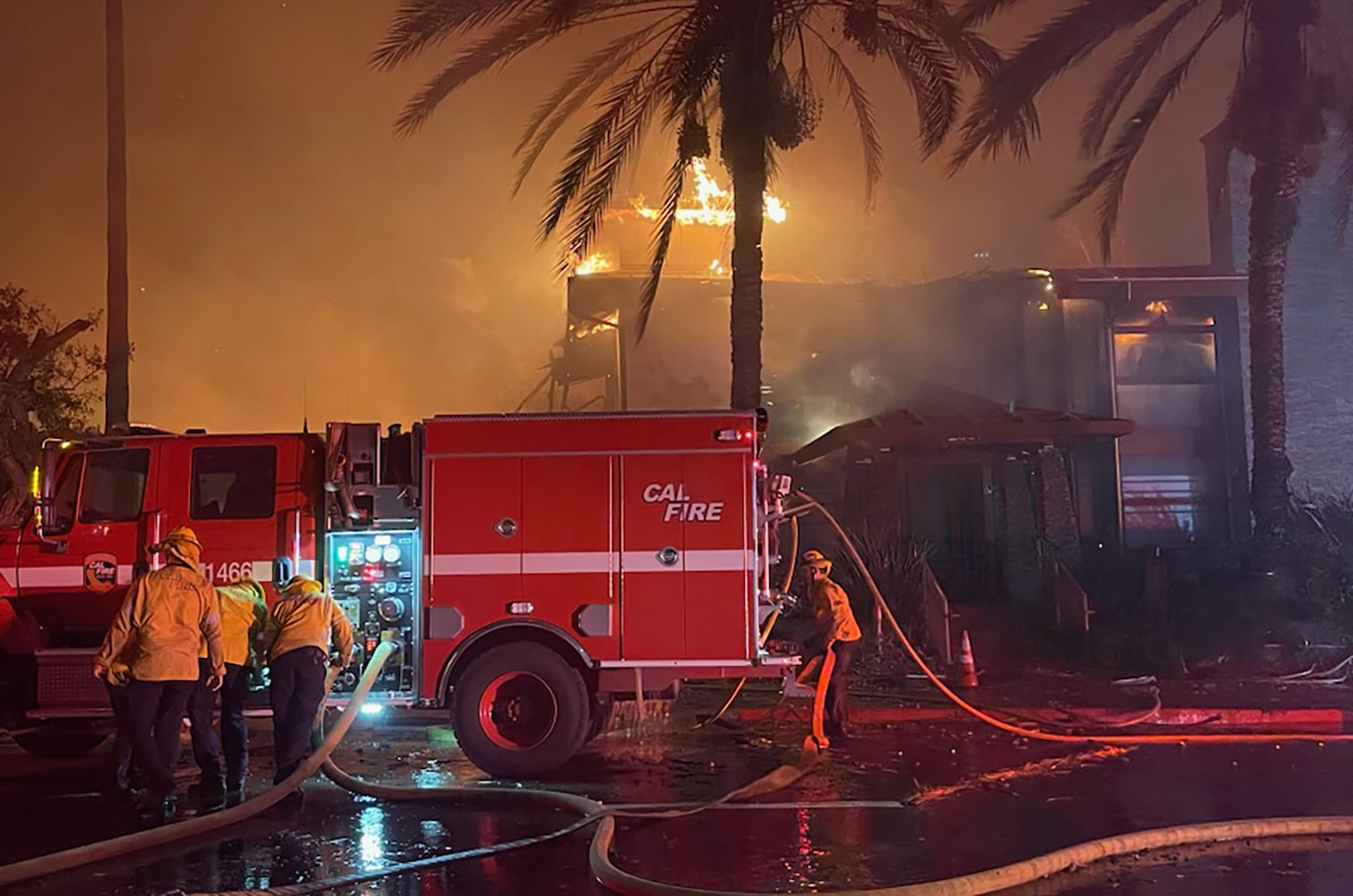 California Department of Forestry and Fire Protection
California Department of Forestry and Fire ProtectionWith an aging power grid under threat from growing climate risks, the need to bolster reliability has never been greater.
Solutions being employed include real-time fault detection and targeted isolation, which can help electric utilities withstand and respond better to weather events. Consumer-side smart meters, meanwhile, open new business cases that align consumer savings with grid reliability.
Further reading:
- Why wildfire recovery demands a new standard of structural resilience
- Devastating wildfires hit close to home for LA civil engineers
- Automated aerial firefighting drones to provide faster responses
Power line faults describe abnormal conditions along a line, such as those caused by open or short circuits.
The average age of power infrastructure in the U.S. exceeds 25 years, says David Monahan, business development manager for Ireland-based TE Connectivity, which engineers connectors and sensors in various industries.
At the same time, natural disasters such as wildfires and hurricanes have increased in intensity, driving up utility costs. These costs include not only what’s needed to maintain infrastructure but also the costs to address the regulatory penalties and legal settlements that result from deferred maintenance.
“Wildfires, in particular, are exploding in cost as we see them happening every year now, throughout the year,” Monahan said at an Oct. 7 T&D World webinar on utility strategies for rapid response and recovery.
In addition to the loss of lives, he expects the cost of the Eaton and Palisades fires this year near Los Angeles, for example, to be hundreds of billions of dollars. Multiple lawsuits have claimed that Southern California Edison failed to cut power to its transmission lines despite registering faults along a line hours before the fires began.
Monahan also estimates that the cost of Hawaii’s 2023 Maui fire will be billions of dollars.
The threat of fires has expanded beyond just the American west. A June report from the Stanford Climate and Energy Policy Program suggests that wildfire risks have outpaced mitigation and response plans, especially in the Southeast, Gulf Coast, and Upper Midwest regions of the U.S., where legal and regulatory regimes around utility-started wildfires do not yet exist. Shifting weather conditions, historical fire-suppression practices, and development deeper into wildland areas have converged to increase wildfire risks across North America.
“Our grid is vulnerable, and the cost of inaction is high,” said Justin Opel, TE product manager, at the webinar. “Investing in resilience isn’t just a strategic move for our utilities, it’s a necessary one to protect communities and ensure reliable power in the face of increasingly severe weather.”
Grid-hardening upgrades
Trees, equipment failures, and squirrels – which command their own category apart from other wildlife – rank as the top causes of power outages in the U.S. When vegetation and animals touch energized lines, they also can set off fires.
Monahan says proper wildlife and vegetation management plays a key role in staying ahead of wildfires. Utilities can install anticlimbing wraps and nesting diverters on utility poles to deter animals. Insulating line covers offer a more proactive strategy to vegetation management than waiting for faults and can save costs by allowing longer maintenance cycles.
Grid hardening can also include automated fault monitoring, said TE global product manager Hamed Rezaei. Without automated monitoring, utilities must rely on crew members to manually locate faults, which may take days in remote storm-damaged areas.
Fault indicators installed on overhead lines can help crews locate those faults. Local indicators emit a strobe light to signal crews on the scene, while remote indicators can send messages over cellular networks or integrate with Supervisory Control and Data Acquisition systems.
“The solution, in the end, is a way of responding to the fault when they happen to be able to locate the fault as quickly as possible and then minimize the inspection time to find and locate the fault,” Rezaei said.
Once a fault is located, strategically placed in-line disconnect switches would allow utilities to isolate damaged segments instead of cutting power to entire feeder lines and placing unaffected customers in an outage, Opel says. The switches prevent back-feeding and accidental energization of the lines, improving crew safety.
Digitalization and the smart grid
Grid digitalization in general increases reliability, Rezaei said. He drew comparisons to the power grid in Germany, where outages averaged 12.8 minutes in 2023 compared with 124-minute average outages in the U.S. that year. In addition to having fewer overhead lines susceptible to wildlife and vegetation, Germany has succeeded in its effort to modernize its power grid over the past 10-15 years, Rezaei said.
In 2011, an earthquake and subsequent tsunami damaged power systems at the Fukushima Daiichi Nuclear Power Plant in Japan, triggering the meltdowns of three reactor cores. The disaster led to decisive moves within Germany to accelerate its phaseout of nuclear power and replace much of that capacity with intermittent, renewable sources.
Part of that nationwide transition, known as Energiewende, has also involved a movement to digitize its grid, integrating the smart grid, smart meters, and smart homes into a cohesive whole. Recent legislation has added momentum to smart-meter adoption in Germany.
Jannis Jehmlich, product manager at German climate startup 1KOMMA5°, which sells hardware to help electrify homes along with the software to manage power usage in response to near-real-time energy markets, looks forward to closing the feedback loop on which household systems call for power and when.
The data, explains Jehmlich, begets predictability, and predictability leads to more efficient power consumption that will improve grid reliability, reduce greenhouse gas emissions, and save ratepayers money all at the same time. 1KOMMA5°’s systems balance power needs with dips in energy prices to schedule consumption.
Consumer participation in the balancing market “allows a lot more interesting business models, because suddenly you don’t have these very centralized contracts between gas-powered plants and distribution system operators, but suddenly you can just let the market do its magic,” Jehmlich said. “You put a price on it; you have a good mechanism, and then suddenly everyone can participate (in) stabilizing the grid.
“When you extend that thought of having customers on dynamic prices and customers following more the rhythm of the sun and wind … you can push electricity prices very, very low,” Jehmlich said. “Suddenly, it’s a very good business case to electrify your complete home, and you get climate-positive action as a business case.”



